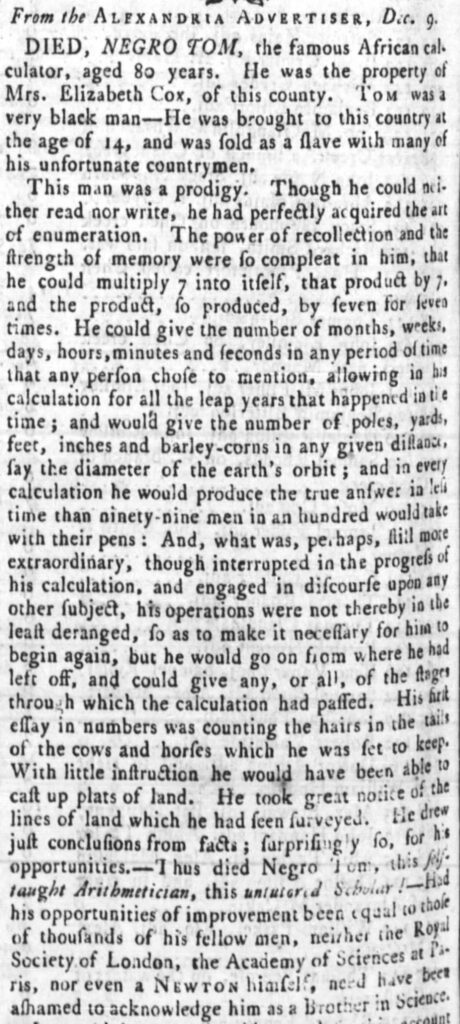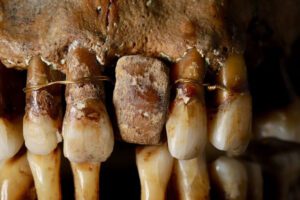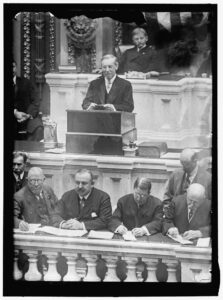
09 Feb Genealogy Newsletter- February 11, 2023
Contents
- 1 GENEALOGY WE HAD A TEN PERSON SUPREME COURT
- 2 GENEALOGY THE GOLDEN SECRET
- 3 GENEALOGY CLEOPATRA’S DAUGHTER CLEOPATRA WAS ALSO NOTABLE
- 4 GENEALOGY WOODROW WILSON GIVING HIS FIRST STATE OF THE UNION ADDRESS; THE FIRST TIME SINCE 1801 THAT SUCH AN ADDRESS WAS MADE IN PERSON BEFORE A JOINT SESSION OF CONGRESS.
- 5 YOUR ANCESTORS ARE WAITING TO BE DISCOVERED!
 GENEALOGY WE HAD A TEN PERSON SUPREME COURT
GENEALOGY WE HAD A TEN PERSON SUPREME COURT
Genealogy When Lincoln became president in 1861, seven Southern states had already seceded from the Union, yet half of the Supreme Court justices were Southerners, including Chief Justice Roger B. Taney of Maryland. One other Southern member had died in 1860, without replacement. All were Democratic appointees.
The Court was “the last stronghold of Southern power,” according to one Northern editor. Five sitting justices were among the court’s 7-2 majority in the racist 1857 Dred Scott v. Sandford ruling, in which Taney wrote that Black people were “so far inferior that they had no rights which the white man was bound to respect, and that the negro might justly and lawfully be reduced to slavery for his benefit.”
Some Republicans declared it “the duty of the Republican Party to reorganize the Federal Court and reverse that decision, which … disgraces the judicial department of the Federal Government.”
After Lincoln called in April, 1861 for 75,000 volunteers to put down the Southern rebellion, four more states seceded. So did Justice John Archibald Campbell of Georgia, who resigned on April 30.
Chief Justice Taney helped the Confederacy when he tried to restrain the president’s power. In May 1861, he issued a writ of habeas corpus in Ex Parte Merryman declaring that the president couldn’t arbitrarily detain citizens suspected of aiding the Confederacy. Lincoln ignored the ruling.
To counter the court’s southern bloc, Republican leaders used judicial appointments to protect the president’s power to fight the Civil War. The Lincoln administration was also looking ahead to Reconstruction and a governing Republican majority.
Nine months into his term, Lincoln declared that “the country generally has outgrown our present judicial system,” which since 1837 had comprised nine federal court jurisdictions, or “circuits.” Supreme Court justices rode the circuit, presiding over those federal courts.
Republicans passed the Judiciary Act of 1862, overhauling the federal court system by collapsing federal circuits in the South from five to three while expanding circuits in the North from four to six. The old ninth circuit, for example, included just Arkansas and Mississippi. The new ninth included Missouri, Kansas, Iowa and Minnesota instead. Arkansas became part of the sixth, and Mississippi, the fifth.
In 1862, after Campbell’s resignation and McLean’s death, Lincoln filled three open Supreme Court seats with loyal Republicans Noah H. Swayne of Ohio, Samuel Freeman Miller of Iowa and David Davis of Illinois. The high court now had three Republicans and three Southerners.
The 1863 Prize cases tested whether Republicans had managed to secure a friendly court. At issue was whether the Union could seize American ships sailing into blockaded Confederate ports. In a 5-4 ruling, the high court – including all three Lincoln appointees – said yes.
Congressional Republicans spied a way to expand the court while solving what amounted to a geopolitical judicial problem. In 1863, Congress created a new tenth circuit by adding Oregon, which had become a state in 1859, to California’s circuit. The Tenth Circuit Act also added a tenth Supreme Court justice. Lincoln elevated pro-Union Democrat Stephen Field to that seat.
And after Chief Justice Taney died in 1864, Lincoln selected his political rival, Treasury Secretary Salmon P. Chase, an architect of national monetary policy, to replace him. With Chase, Lincoln succeeded in creating a pro-administration high court.
I could not find a picture of the ten-person supreme court, so I used A\I to create a picture. If I used 10 judges, I got 9, so I did 11, and got 10. I have no idea where the judge faces came from, but I am thinking it might be a while before the Supreme Court uses A\I for their official portraits.
https://www.supremecourt.gov/
THE ARTICLE BELOW IS FROM 1790.



GENEALOGY THE GOLDEN SECRET
Scientists have discovered the long-buried secret of a 17th-century French aristocrat 400 years after her death: she was using gold wire to keep her teeth from falling out.
The body of Anne d’Alegre, who died in 1619, was discovered during an archaeological excavation at the Chateau de Laval in northwestern France in 1988.
Embalmed in a lead coffin, her skeleton — and teeth — were remarkably well-preserved.
At the time, the archaeologists noticed that she had a dental prosthetic, but they did not have advanced scanning tools to find out more.
Thirty-five years later, a team of archaeologists and dentists have identified that d’Alegre suffered from a periodontal disease that was loosening her teeth, according to a study published in the Journal of Archaeological Science: Reports this week.
“Beyond the only therapeutic care and far from the only coquetry, this study also shows the importance of the appearance for aristocratic women submitted to strong social constraints (like stress or widowhood),” the authors wrote.
A “Cone Beam” scan, which uses X-rays to build three-dimensional images, showed that gold wire had been used to hold together and tighten several of her teeth.
She also had an artificial tooth made of ivory from an elephant — not a hippopotamus, which was popular then.
The scientists said their paper “provides the first demonstration of a link between a diagnosis and a therapy on an identified individual using new digital technologies used in modern dentistry.”
But the ornate dental work only “made the situation worse,” said Rozenn Colleter, an archaeologist at the French National Institute for Preventive Archaeological Research and lead author of the study.
The researchers said the gold wires would have needed repeated tightening over the years, further destabilizing the neighboring teeth.
D’Alegre likely went through the pain for more than just medical reasons. There was massive pressure on aristocratic women at a time when appearance was seen as related to value and rank in society.
Ambroise Pare, a contemporary of d’Alegre’s who was the doctor for several French kings and designed similar dental prosthetics, claimed that “if a patient is toothless, his speech becomes depraved,” Colleter told AFP.
A friendly smile was significant for d’Alegre, a “controversial” twice-widowed socialite “who did not have a good reputation,” Colleter added.
D’Alegre lived through a troubled time in French history.
She was a Huguenot, and they were the Protestants who fought against Catholics in the French Wars of Religion in the late 1500s.
By age 21, she was widowed once and had a young son, Guy XX de Laval.
When the country plunged into the Eighth War of Religion, d’Alegre and her son were forced to hide from Catholic forces while the king seized their property.
Her son then converted to Catholicism and went to fight in Hungary, dying in battle at the age of 20.
After being widowed a second time, d’Alegre died of an illness aged 54.
D’Alegre’s teeth “shows that she went through a lot of stress,” Colleter said.
The researcher said she hopes the research “goes a little towards rehabilitating her.”
 GENEALOGY CLEOPATRA’S DAUGHTER CLEOPATRA WAS ALSO NOTABLE
GENEALOGY CLEOPATRA’S DAUGHTER CLEOPATRA WAS ALSO NOTABLE
Cleopatra Selene II 40 BC – c. 5 BC. was a Ptolemaic princess, Queen of Numidia (briefly in 25 BC) and Mauretania (25 BC – 5 BC) and Queen of Cyrenaica (34 BC – 30 BC). She was an important royal woman in the early Augustan age.
Cleopatra Selene was the only daughter of Greek Ptolemaic Queen Cleopatra VII of Egypt and Roman Triumvir Mark Antony. In the Donations of Antioch and of Alexandria, she was made queen of Cyrenaica and Libya.
After Antony and Cleopatra’s defeat at Actium and their suicides in Egypt in 30 BC, Selene and her brothers were brought to Rome and placed in the household of Octavian’s sister, Octavia the Younger, a former wife of her father.
Selene eventually married Juba II of Numidia and Mauretania. She had great influence in Mauretania’s government decisions, especially regarding trade and construction projects. During their reign, the country became extremely wealthy. The couple had a son and successor, Ptolemy of Mauretania. Through their granddaughter Drusilla, the Ptolemaic line intermarried into Roman nobility for many generations.
Cleopatra was survived by her husband and their son Ptolemy, who ruled Mauretania together until Juba’s death in AD 23. Ptolemy then reigned until 40, when he was executed by Emperor Caligula, his mother’s great nephew, who was probably jealous of Mauretania’s wealth. Caligula’s successor, Emperor Claudius, took advantage of Ptolemy’s lack of heirs and assumed control of Mauretania, turning it into the Roman provinces of Mauretania Caesariensis and Mauretania Tingitana. Thereafter, Cleopatra, Juba and Ptolemy were mostly forgotten.
https://www.bbc.com/news/world-africa-13881985
 GENEALOGY WOODROW WILSON GIVING HIS FIRST STATE OF THE UNION ADDRESS; THE FIRST TIME SINCE 1801 THAT SUCH AN ADDRESS WAS MADE IN PERSON BEFORE A JOINT SESSION OF CONGRESS.
GENEALOGY WOODROW WILSON GIVING HIS FIRST STATE OF THE UNION ADDRESS; THE FIRST TIME SINCE 1801 THAT SUCH AN ADDRESS WAS MADE IN PERSON BEFORE A JOINT SESSION OF CONGRESS.
If interested, the first State of the Union address appears below as published.

 YOUR ANCESTORS ARE WAITING TO BE DISCOVERED!
YOUR ANCESTORS ARE WAITING TO BE DISCOVERED!
Reach out to Dancestors and let us research, discover, and preserve your family history. No one is getting any younger, and stories disappear from memory every year and eventually from our potential ability to find them. Paper gets thrown in the trash; books survive! So do not hesitate and call me @ 214-914-3598.


 GENEALOGY WE HAD A TEN PERSON SUPREME COURT
GENEALOGY WE HAD A TEN PERSON SUPREME COURT GENEALOGY CLEOPATRA’S DAUGHTER CLEOPATRA WAS ALSO NOTABLE
GENEALOGY CLEOPATRA’S DAUGHTER CLEOPATRA WAS ALSO NOTABLE GENEALOGY WOODROW WILSON GIVING HIS FIRST STATE OF THE UNION ADDRESS; THE FIRST TIME SINCE 1801 THAT SUCH AN ADDRESS WAS MADE IN PERSON BEFORE A JOINT SESSION OF CONGRESS.
GENEALOGY WOODROW WILSON GIVING HIS FIRST STATE OF THE UNION ADDRESS; THE FIRST TIME SINCE 1801 THAT SUCH AN ADDRESS WAS MADE IN PERSON BEFORE A JOINT SESSION OF CONGRESS. YOUR ANCESTORS ARE WAITING TO BE DISCOVERED!
YOUR ANCESTORS ARE WAITING TO BE DISCOVERED!